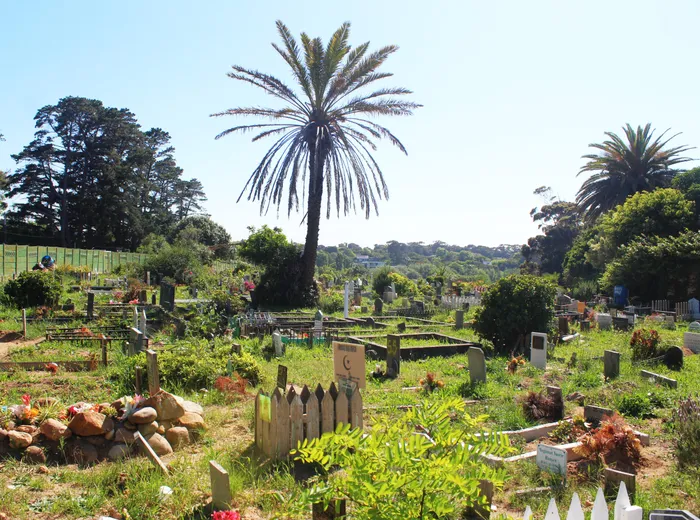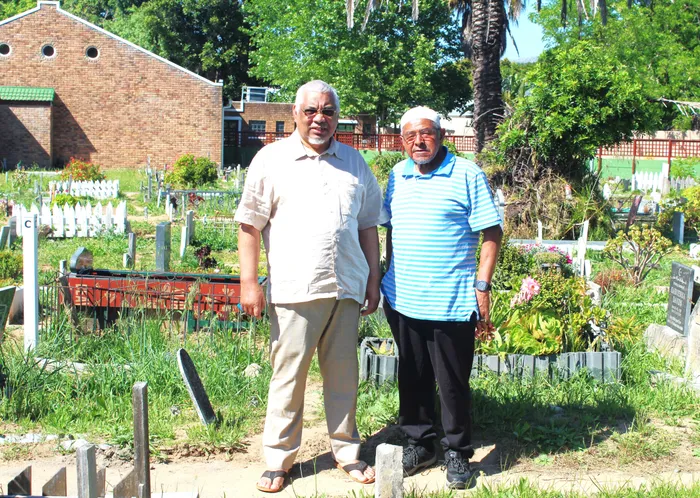The enduring legacy of the Constantia Mosque and Muslim Cemetery

The Spaanschemat River Road Muslim Cemetery.
Image: Wesley Ford
The legacy and future generation of the Muslim religion in Constantia is celebrated and preserved at the Spaanschemat River Road Muslim Cemetery and the Constantia Mosque that opened simultaneously in 1883.
The maintenance and management of the cemetery and mosque are run by Spaanschemat River Road Muslim Cemetery Association and Masjid Monier's Committee, respectively, where Natheem Hendricks serves as chairperson of both committees.
Mr Hendricks said part of the property was donated by a woman known only as Naeemah, on which the Masjid Monier mosque and part of the cemetery were established. He added that the southern portion of the Spaanschemat River Road Muslim cemetery was bought by 105 families in 1924. A section of this lower part of the cemetery was later sold to the Wynberg community and became known as the Strawberry Lane Muslim Cemetery, he said.
Committee member of the Spaanschemat River Road Muslim Cemetery Association, Abduragman Allie, says more than 4 000 people have been buried in the cemetery in its long history.
Mr Hendricks said this place became an important space to preserve.
“Around 99% of its members were expelled from Constantia during the Group Areas Act, and the cemetery and the mosque could be the only places that could be claimed by the Muslim community,” he said.
He said that as a community, they wanted to maintain and honour this area, adding that they did receive pushback from the local residents during apartheid, and they built a fence around the area. “This site was seen as an eyesore for that community and did not fit into their idea of the area during that time,” he said.
To maintain the cemetery, the association collects an annual membership fee of R120 per family. Anyone burying a loved one pays a once-off fee of R300 to the groundsman who digs the grave. In recent months, the association has also begun geo-tagging grave sites so families can easily locate their loved ones. Mr Hendricks said more than 1 000 graves have been geo-tagged, while those that are not tagged are unnamed.
Mr Hendricks said that many people who live in different parts of the province still wish for their families to be buried in Constantia.
“This is part of their heritage; they were removed, though they still want their burial space in Constantia,” he said.
Mr Allie, who is originally from Constantia, though lives in Lotus River, said his grandfather, Abdullah Geyer, who is buried at this cemetery, was one of 105 people who purchased part of the cemetery.
Mr Hendricks also lived in Constantia before having to move to Grassy Park. His great-grandfather, Goosain Damon from Constantia, is also buried in this cemetery.
Mr Allie, who has been involved for more than 40 years with the cemetery, said he made a promise to the older generation that he would help look after the site.
The Masjid Monier is currently under the leadership of Sheikh Omar Davids. Mr Hendricks said they would have liked to have expanded the building further, though, because it is a heritage building, they need to get further permission from Heritage Western Cape before they can continue.
He said their mosque is normally busy on Fridays or on special prayer times for the community, though they would like to perhaps expand their services to make it an educational space for their community to learn more about the Quran.
They would also like to partner with mosques from informal settlements.
“We would go there and they can come to us, where their congregants can share in our activities,” he said.

Longserving members of the Spaanschemat River Road Muslim Cemetery and Constantia Mosque, Natheem Hendricks, left, and Abduragman Allie.
Image: Wesley Ford

The Constantia Mosque, which is also known as the Masjid Monier.
Image: Tape Bedford
Related Topics: